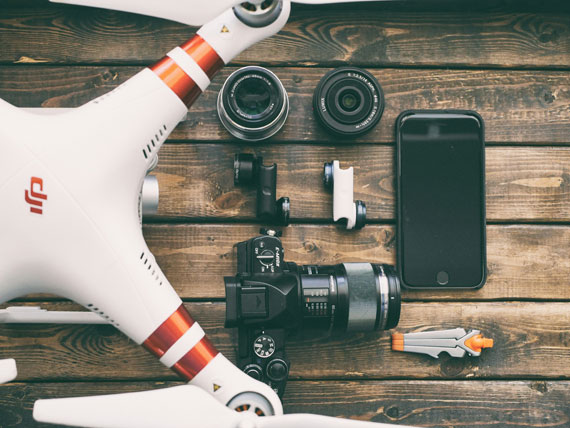Drones have revolutionized the way photographers capture stunning aerial shots, offering perspectives that were once only possible with expensive equipment or aircraft. However, flying a drone isn’t without its challenges. As drone photography continues to grow in popularity, it’s important for photographers to understand the common issues that drone pilots often face.
Whether you’re new to drone photography or looking to improve your skills, being aware of these challenges can help you avoid potential pitfalls and ensure your flights are safe and successful. Here are five common issues that drone pilots experience and what drone photographers should know about them.

Photo captured by Aaron Burden
1. Signal Interference and Loss of GPS
One of the most common issues drone pilots face is signal interference or loss of GPS. This can happen for various reasons, such as flying near power lines, cell towers, or even in urban areas with lots of wireless signals. Signal interference can cause your drone to lose connection with the controller, leading to erratic flight behavior or, in the worst-case scenario, a flyaway where the drone drifts out of range.
What You Should Do:
Before taking off, ensure your drone’s GPS signal is strong and that you’re flying in an area with minimal interference. Avoid flying near large metal structures or in areas with heavy wireless activity. Always maintain a visual line of sight with your drone and be prepared to switch to manual mode if necessary.
2. Battery Life and Management
Battery life is a critical factor in drone photography. Most consumer drones have a flight time of 20-30 minutes, which can be significantly reduced if you’re flying in windy conditions or using the camera extensively. Running out of battery mid-flight can lead to your drone making an emergency landing, potentially causing damage to your equipment or landing in a hazardous area.
What You Should Do:
Always start your flights with fully charged batteries and keep an eye on the battery level throughout your flight. Plan your flight path in advance and be aware of how much battery life you have left to return to your takeoff point safely. Carry spare batteries and avoid flying in extreme weather conditions that can drain your battery faster.
3. Weather Conditions
Weather plays a significant role in drone photography. High winds, rain, fog, and extreme temperatures can all affect your drone’s performance and safety. Strong winds can make it difficult to control your drone, while rain can damage sensitive electronic components. Fog can limit visibility, making it hard to see obstacles, and extreme temperatures can affect battery performance and reduce flight time.
What You Should Do:
Always check the weather forecast before heading out for a drone shoot. Avoid flying in windy or rainy conditions, and be mindful of temperature extremes. If you’re unsure about the weather conditions, it’s best to postpone your flight.
4. Legal Restrictions and No-Fly Zones
With the increasing popularity of drones, many countries have implemented strict regulations regarding where and how drones can be flown. Flying in restricted areas, such as near airports, military bases, or over crowds, can result in hefty fines or even legal action. It’s essential to be aware of the laws in your area and ensure you’re compliant.
What You Should Do:
Before flying, familiarize yourself with local regulations and no-fly zones. Many drone apps provide real-time information on restricted areas. Always keep your drone within the legal altitude limit and avoid flying over people or private property without permission. Obtaining proper certification and insurance can also help protect you from potential legal issues.
5. Obstacle Avoidance Failures
While many modern drones come equipped with obstacle avoidance systems, these aren’t foolproof. Drones can still crash into obstacles like trees, buildings, or power lines, especially when flying in manual mode or in low-light conditions where sensors may not detect obstacles properly. Additionally, some drones may not have sensors on all sides, leaving them vulnerable to collisions.
What You Should Do:
Understand the limitations of your drone’s obstacle avoidance system and do not solely rely on it. Always fly with caution and maintain a visual line of sight to manually avoid obstacles. When flying in complex environments, consider using a slower flight mode that gives you more control and time to react to potential hazards.
Summary:
While drone photography offers exciting opportunities to capture unique perspectives, it’s essential to be aware of the common challenges that drone pilots face. By understanding and preparing for these issues, you can ensure that your drone flights are safe, legal, and successful. Always stay informed about your drone’s capabilities, local regulations, and environmental conditions to make the most of your drone photography adventures. Happy flying!
Like This Article?
Don't Miss The Next One!
Join over 100,000 photographers of all experience levels who receive our free photography tips and articles to stay current:






Leave a Reply